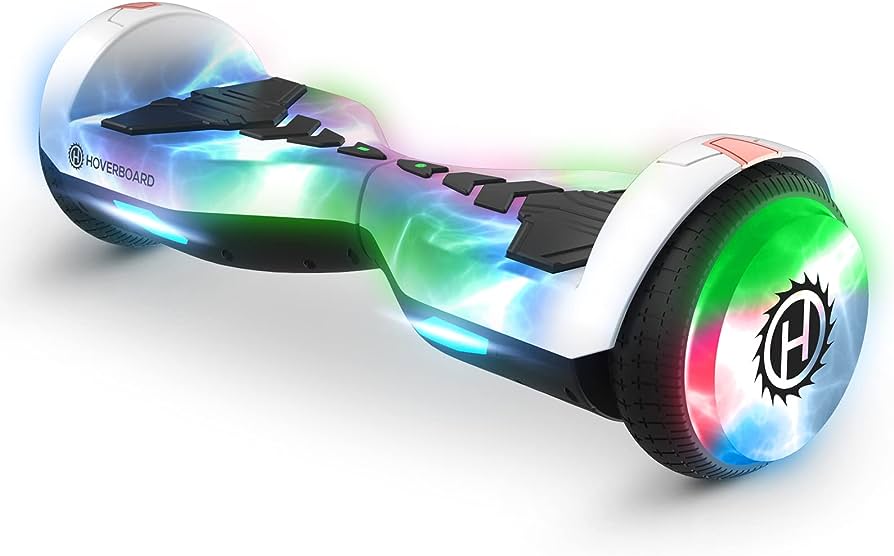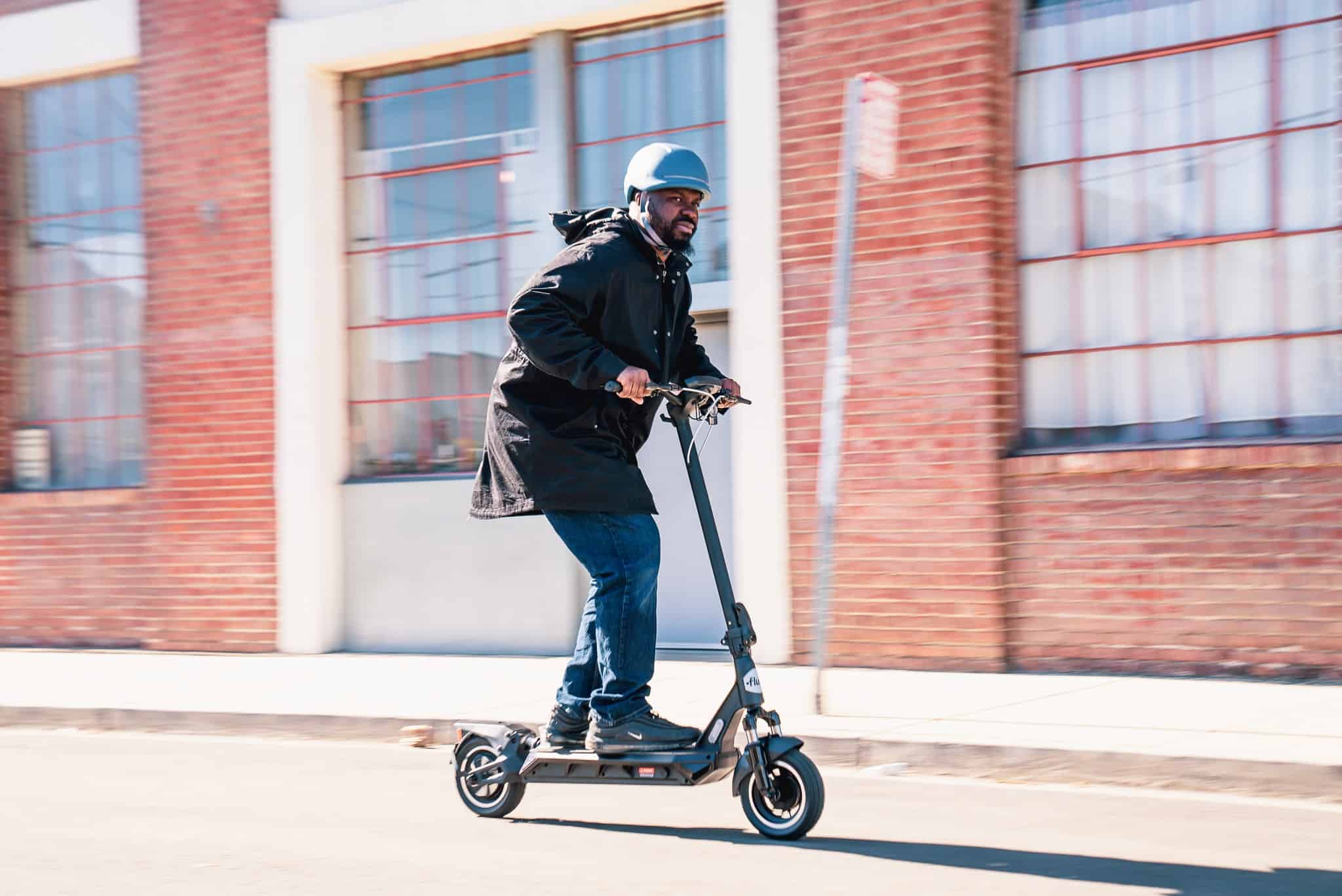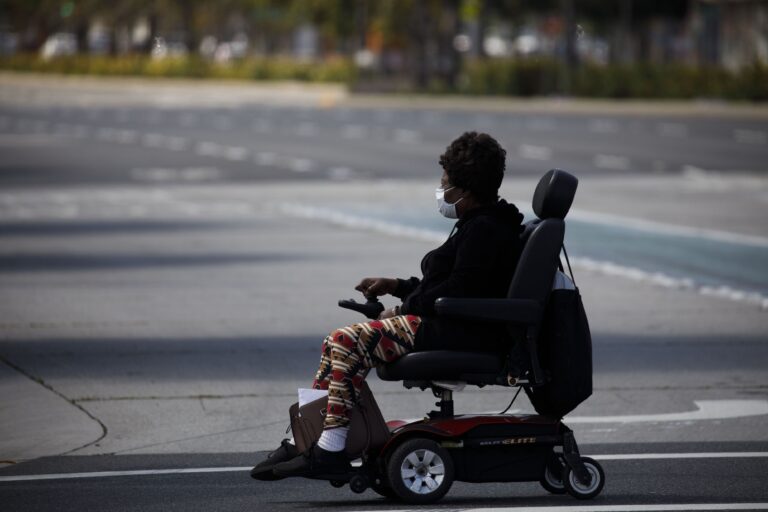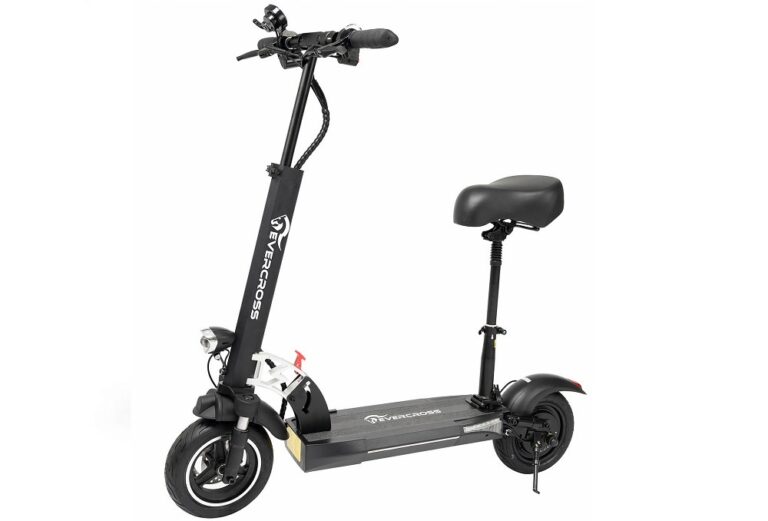Pulse Scooter Not Working : Troubleshooting Tips for a Smooth Ride

The Pulse scooter not working may be due to a battery issue or a malfunctioning motor. Pulse scooters are a popular choice for commuters and scooter enthusiasts alike, but sometimes they can experience issues that prevent them from working properly.
If your Pulse scooter is not working, there are a few potential reasons why. The most common issues are related to the battery or the motor. If your scooter isn’t turning on, it could be because of a dead battery.
In this case, you’ll need to charge the scooter before it will work. If the battery is fully charged but the scooter still won’t turn on, there may be an issue with the motor. This could require professional assistance to diagnose and repair. By understanding these common issues, you’ll be better equipped to troubleshoot and fix your Pulse scooter.
Understanding The Common Issues
Experiencing troubles with your Pulse scooter? Find solutions to common issues and troubleshoot why your scooter is not working. Understand the underlying problems and explore effective ways to get your scooter up and running again.
Is your Pulse scooter not working as expected? Fret not! We have compiled a list of the most common issues that you might encounter with your electric scooter. Read on to understand these problems and find the solutions to get your scooter up and running in no time.
Battery Draining Quickly
If you find that your Pulse scooter’s battery doesn’t last as long as it used to, here are a few potential causes:
- Improper charging: Ensure that you are charging the battery fully and using the correct charger.
- Battery age: Over time, batteries can lose their capacity to hold a charge. Consider replacing the battery if it’s old.
- Riding conditions: Uphill rides and riding at high speeds can drain the battery faster.
- Constant braking and accelerating: Frequent stops and starts can also contribute to quicker battery drain.
Scooter Not Starting
Encountering difficulties starting your Pulse scooter can be frustrating, but there are a few common culprits to consider:
- Power switch: Check if the power switch is turned on and functioning properly.
- Loose battery connections: Ensure that the battery connections are secure and free from any debris.
- Key lock: Make sure the key lock is in the proper position and isn’t preventing the scooter from starting.
- Faulty ignition system: If none of the above solves the issue, there might be a problem with the ignition system, which may require professional assistance.
Sudden Power Loss
Experiencing sudden power loss during your ride can be dangerous. Here are a few reasons why this may happen:
- Overheating: If you push your scooter beyond its limits or ride in hot weather conditions, it may overheat and shut down to protect itself. Give the scooter some time to cool down before riding again.
- Controller malfunction: The controller is responsible for regulating power supply to the motor. A malfunctioning controller can cause power loss. Get professional help to diagnose and fix this issue.
- Loose connections: Check all the wires and connections to ensure they are properly plugged in and secure.
By understanding these common issues, you can troubleshoot and resolve problems with your Pulse scooter more effectively. Don’t hesitate to seek professional help if needed, and get ready to enjoy your electric scooter to the fullest once again!
Checking The Battery
To troubleshoot a pulse scooter not working, it’s essential to check the battery. Ensure it is fully charged and in good condition to ensure optimal performance.
Pulse Scooter Not Working:
Having trouble with your Pulse Scooter? One of the first things to check is the battery. Battery issues are a common cause of electric scooter malfunctions. In this section, we will guide you through the steps of inspecting the battery connections, testing the battery voltage, and charging the battery properly.
Inspecting The Battery Connections
To ensure that your Pulse Scooter is receiving power correctly, it is crucial to inspect the battery connections. Here’s how you can do it:
- Remove any covers or protective casings that may be in place.
- Check that the battery terminals are firmly connected to the scooter’s wiring.
- Look for any loose or corroded connections and clean them with a wire brush if necessary.
- Examine the wires for any signs of damage or wear.
Testing The Battery Voltage
Now that you’ve inspected the connections, it’s time to check the battery voltage. This will help determine if the battery has sufficient power to operate the scooter. Follow these steps:
- Turn off the scooter and locate the battery.
- Using a multimeter set to voltage mode, connect the positive (red) probe to the positive battery terminal and the negative (black) probe to the negative terminal.
- Read the voltage displayed on the multimeter. A fully charged scooter battery typically reads around 36-42 volts.
- If the voltage is significantly lower than the expected range, it may indicate a low battery or potential battery failure.
Charging The Battery Properly
Now that you have determined the battery voltage is low, it’s time to charge the battery properly. Here are some tips to ensure effective charging:
- Always use the charger specifically designed for your Pulse Scooter.
- Connect the charger to the scooter’s charging port securely.
- Plug the charger into a reliable power source.
- Allow the battery to charge fully, as per the manufacturer’s instructions. This usually takes several hours.
- Avoid overcharging the battery, as it may damage its lifespan.
By following these steps to inspect the battery connections, test the battery voltage, and charge the battery properly, you can troubleshoot and resolve many issues related to a malfunctioning Pulse Scooter. Remember to consult the manufacturer’s manual or seek professional assistance if the problem persists.
Happy Scooting!
Assessing The Electrical System
Assessing the electrical system of a pulse scooter is crucial when troubleshooting why it is not working. By carefully examining the wiring, battery, and connections, you can identify and fix any underlying issues affecting its performance.
Pulse Scooter Not Working:
If you’re experiencing issues with your Pulse Scooter, the first step in troubleshooting is to assess the electrical system. By examining the wiring connections, testing the fuse, and checking the controller, you can identify and resolve potential electrical problems. Let’s dive into each aspect of the assessment:
Examining The Wiring Connections:
- Start by visually inspecting all the wiring connections on your Pulse Scooter.
- Ensure that all connections are secure and free from any signs of damage or corrosion.
- Pay close attention to the battery connections, throttle wires, and motor cables.
- If you notice any loose or damaged connections, secure them properly or consider replacing the faulty components.
Testing The Fuse:
- Locate the fuse box, usually located near the scooter’s battery.
- Carefully remove the fuse and inspect it for any signs of damage or a blown filament.
- If the fuse appears to be intact, you can use a multimeter to test its continuity.
- Set the multimeter to the resistance or continuity mode.
- Place the multimeter probes on both ends of the fuse.
- If the multimeter indicates continuity (a reading close to zero), the fuse is functional.
- If there is no continuity (an infinite reading), the fuse has blown and needs replacing.
Checking The Controller:
- The controller is a vital component of the Pulse Scooter’s electrical system.
- Inspect the controller for any visible damage, such as melted wires or components.
- Ensure all the controller’s connectors are securely attached.
- Use a multimeter to test the voltage output from the controller to the motor.
- Connect the multimeter probes to the motor side of the controller.
- Activate the throttle to test whether the voltage fluctuates as you increase or decrease the throttle input.
- If the multimeter readings are inconsistent or nonexistent, the controller may be faulty and needs replacement.
By carefully examining the wiring connections, testing the fuse, and checking the controller, you can troubleshoot and resolve electrical problems that may be causing your Pulse Scooter to malfunction. Remember, always exercise caution when working with electrical components, and if you’re unsure about any steps, consult a professional.
Keep your scooter’s electrical system in top shape for a smooth and enjoyable ride!
Inspecting The Motor
Inspecting the motor is crucial when your Pulse scooter is not working. Check for loose connections, damaged wires, or a faulty motor to diagnose and fix the issue.
If you’re having trouble with your Pulse scooter, the first thing to check is the motor. A malfunctioning motor can cause various issues, such as the scooter not moving or making strange noises. By performing a thorough inspection of the motor, you can identify and potentially fix the problem.
Here are the steps to follow:
Ensuring The Motor Is Not Blocked:
- Check for any physical obstructions around the motor area, such as debris or tangled wires.
- Remove any dirt or debris that might be blocking the motor.
- Inspect the motor housing for cracks or damage that could affect its functionality.
- Make sure that the scooter is turned off and disconnected from the power source before inspecting the motor.
Verifying The Motor Connections:
- Examine the motor wiring connections to ensure they are securely attached. Loose or faulty connections can lead to motor issues.
- Look for any signs of corrosion or damage on the motor connectors. Clean or replace them if necessary.
- Check the wiring harness connected to the motor for any frayed or damaged wires. Replace if needed.
Testing The Motor For Faults:
- Turn the scooter on and carefully listen for any unusual sounds coming from the motor. Grinding, scraping, or buzzing noises may indicate a fault.
- Test the motor by gently pushing the scooter forward. If the motor does not engage or struggles to move, there may be an issue.
- Use a multimeter to check the voltage across the motor terminals. Ensure that it matches the scooter’s specifications. A significant deviation could indicate a fault in the motor.
By inspecting the motor, ensuring it is not blocked, verifying the connections, and testing for faults, you can determine if the motor is the cause of your Pulse scooter’s malfunction. If the issue persists or you’re unsure about the motor’s condition, it’s advisable to consult a professional technician for further assistance.
Remember to always prioritize safety and take necessary precautions while working with electrical components.
Investigating The Brake System
Investigate your pulse scooter’s brake system if it’s not working. Ensure its functionality for a safe riding experience.
Pulse Scooter Not Working:
Is your Pulse Scooter experiencing issues with its brake system? Whether the brake levers feel unresponsive or the scooter takes longer to come to a stop, it’s important to investigate the brake system to ensure your safety on the road.
In this section, we’ll cover the steps you can take to troubleshoot and potentially fix any problems with your Pulse Scooter’s brakes.
Checking The Brake Levers:
Having brake levers that are in good working condition is crucial for effective braking performance. Here are the steps you can follow to check the brake levers on your Pulse Scooter:
- Start by gripping the brake levers firmly, one at a time, and squeezing them.
- Check if the brake levers move smoothly without any resistance.
- Ensure that the brake levers return to their original position once released.
- If you notice any stiffness or stickiness in the brake levers, they may need lubrication or adjustment.
- Tighten any loose screws or bolts on the brake lever assembly if necessary.
Inspecting The Brake Pads:
The brake pads are responsible for creating friction against the scooter’s wheels to slow them down. Here’s how you can inspect the brake pads on your Pulse Scooter:
- Locate the brake pads on both the front and rear wheels of your scooter.
- Check if the brake pads appear worn out, uneven, or excessively thin.
- Inspect the brake pads for any signs of damage, such as cracks or missing sections.
- Ensure that the brake pads make proper contact with the wheels when the brake levers are squeezed.
- If the brake pads are worn or damaged, they may need replacement.
Adjusting The Brake Cable Tension:
Proper brake cable tension ensures that the brake system engages and disengages as intended. Here’s how you can adjust the brake cable tension on your Pulse Scooter:
- Locate the brake cable adjuster, typically found near the brake lever assembly.
- Turn the adjuster clockwise to tighten the brake cable or counterclockwise to loosen it.
- Test the brake levers after each adjustment to ensure the desired braking response.
- Adjust the brake cable tension until the brakes engage smoothly and without excessive force.
- Avoid over-tightening the brake cable, as it may lead to the brakes constantly rubbing against the wheels.
Remember, it’s important to exercise caution when working on your Pulse Scooter’s brake system. If you’re unsure or uncomfortable performing any of the steps mentioned, it’s best to consult a professional mechanic or seek assistance from the scooter manufacturer. By following these troubleshooting steps, you can potentially resolve any brake-related issues and continue enjoying a safe and smooth ride on your Pulse Scooter.
Troubleshooting The Throttle
Having trouble with your pulse scooter? If your scooter is not working properly, it might be time to troubleshoot the throttle. Discover the steps to identify and fix the issue in this helpful guide.
Evaluating The Throttle Grip:
- Check the throttle grip for any physical damage or wear and tear.
- Make sure the grip is properly attached to the handlebar.
- Ensure that the grip moves smoothly without any resistance.
- Check if the grip is loose or sliding on the handlebar.
- Ensure that the throttle is not stuck or jammed in any position.
- Test the throttle grip by gently twisting it back and forth to detect any irregularities.
- Pay attention to any unusual sounds or sensations while operating the throttle.
Examining The Throttle Wiring:
- Inspect the wiring connections between the throttle and the scooter’s control panel.
- Look for any loose, frayed, or damaged wires.
- Ensure that the wiring harness is securely connected and properly routed.
- Check for any corrosion or dirt on the connectors and clean if necessary.
- Use a multimeter to test the continuity of the wiring and verify that all connections are intact.
- Pay close attention to the wiring near the throttle grip as it is prone to damage due to constant use.
Calibrating The Throttle Sensor:
- Consult the user manual or manufacturer’s instructions for the specific process of calibrating the throttle sensor.
- Most pulse scooters require a certain sequence of actions to calibrate the throttle.
- Start by turning off the scooter and ensuring that the throttle is in the neutral position.
- Follow the steps outlined in the manual to recalibrate the throttle sensor.
- Keep in mind that improper calibration can lead to issues with throttle response and functionality.
- Once the calibration process is complete, test the throttle to determine if the issue has been resolved.
Remember, troubleshooting the throttle is a crucial step in identifying and resolving any issues with your Pulse scooter. By evaluating the throttle grip, examining the throttle wiring, and calibrating the throttle sensor, you can address potential problems and restore the functionality of your scooter.
If the problem persists, it is advisable to consult a professional technician for further assistance.
Analyzing The Tire Pressure And Condition
Analyzing the tire pressure and condition is crucial for troubleshooting a non-functioning Pulse scooter. Ensure your scooter’s tires are properly inflated and not worn out to ensure optimal performance. Get your scooter back to its peak condition by checking and maintaining tire pressure regularly.
When your Pulse scooter isn’t working properly, it’s crucial to examine the tire pressure and condition as they play a significant role in its performance. Neglecting tire maintenance can lead to reduced efficiency, decreased battery life, and an overall subpar riding experience.
To ensure a smooth and hassle-free ride, follow these steps to analyze the tire pressure and condition of your Pulse scooter:
Checking For Proper Tire Inflation:
- Use a digital tire pressure gauge to measure the air pressure in each tire.
- Maintain consistent tire pressure by referring to the manufacturer’s recommendations. Generally, Pulse scooters require tire pressures between 40-50 PSI.
- Inflate or deflate the tires accordingly, if necessary, ensuring they are evenly pressurized.
Inspecting The Tire Tread:
- Inspect the tire treads for any signs of wear and tear.
- Check for adequate tread depth by using the “coin test.” Insert a penny into the tread groove; if Lincoln’s head is fully visible, it’s time for a new tire.
- Uneven tread wear might indicate an alignment issue; consider getting it checked and corrected promptly.
Identifying Any Punctures Or Damages:
- Visually inspect the tires for any punctures, cuts, or bulges on the surface.
- Ensure there are no foreign objects embedded in the tire, such as nails or glass shards.
- Address any damages promptly by either repairing the tire or replacing it to maintain optimal performance.
By regularly checking and maintaining the tire pressure and condition of your Pulse scooter, you can prevent potential issues and enjoy a safe and efficient riding experience. Remember to follow the manufacturer’s guidelines and seek professional assistance if needed. Stay tuned for our upcoming blog posts, where we’ll continue to explore troubleshooting tips for your Pulse scooter.
Happy riding!
Performing Regular Maintenance
Regular maintenance is essential for keeping your Pulse scooter in good working condition. Ensure you perform routine maintenance tasks to prevent any issues and keep your scooter running smoothly.
Regular maintenance is essential to keep your Pulse Scooter working at its best. By following a few simple steps, you can ensure that your scooter stays in top shape and avoids common issues. In this section, we will explain how to clean the scooter, lubricate moving parts, and conduct routine inspections.
Read on to learn more about these maintenance tasks and keep your Pulse Scooter running smoothly.
Cleaning The Scooter
To keep your Pulse Scooter looking sleek and functioning optimally, regular cleaning is necessary. Here are some steps to help you clean your scooter effectively:
- Start by using a soft cloth or sponge to wipe away any debris or dirt on the scooter’s exterior.
- For stubborn dirt or grime, you can mix a mild detergent with water and gently scrub away the dirt using a soft brush.
- Rinse the scooter thoroughly with clean water to remove any soap residue.
- Dry the scooter completely with a clean cloth or allow it to air dry.
Regular cleaning not only improves the overall appearance of your scooter but also prevents dirt and grime from affecting the scooter’s performance.
Lubricating Moving Parts
Keeping the moving parts of your Pulse Scooter adequately lubricated is crucial for its smooth operation. Below are the steps to follow when lubricating the scooter’s moving parts:
- Identify the areas that require lubrication, such as the steering column, brake cables, and foldable mechanisms.
- Apply a recommended lubricant, specifically designed for scooters, to these areas. Be cautious not to over-apply the lubricant.
- Gently move the parts back and forth to ensure the lubricant is evenly distributed.
- Wipe away any excess lubricant to prevent it from attracting dirt or dust.
By regularly lubricating your scooter’s moving parts, you can minimize friction and enhance its performance, resulting in a more enjoyable riding experience.
Conducting Routine Inspections
Routine inspections are vital to identifying any potential issues with your Pulse Scooter before they become major problems. Follow these steps to conduct a thorough inspection:
- Check the tires for any signs of wear or damage. Ensure they are properly inflated to the recommended pressure.
- Examine the brake system, including the brake pads and cables, for any signs of wear or misalignment. Adjust or replace as necessary.
- Inspect the scooter’s battery to ensure it is securely connected and free from corrosion. Clean the terminals if needed.
- Verify that all lights and signals are functioning correctly. Replace any faulty bulbs promptly.
- Test the scooter’s folding mechanisms and locks to ensure they are secure and working properly.
By conducting routine inspections, you can catch any issues early on and address them before they compromise your scooter’s performance or safety.
Regular maintenance is essential for keeping your Pulse Scooter running smoothly and extending its lifespan. By cleaning the scooter, lubricating the moving parts, and conducting routine inspections, you can ensure that your scooter remains in excellent condition. Implement these maintenance tasks into your regular scooter care routine to enjoy a hassle-free and enjoyable ride every time.
Seeking Professional Assistance
Having trouble with your Pulse Scooter not working? Seek professional assistance to diagnose and fix the issue promptly. Increase the lifespan of your scooter with expert help.
Experiencing issues with your pulse scooter can be frustrating, especially when you’ve exhausted all your DIY solutions. In such cases, it’s wise to seek professional assistance. Hiring a trained and certified technician can offer a quick and efficient solution to get your scooter back up and running.
Here are a few things to keep in mind when it comes to seeking professional help:
When Diy Solutions Don’T Work:
- Occasional scooter malfunctions may be resolved with simple troubleshooting steps. However, if your DIY solutions haven’t yielded any positive results, it’s time to consider professional assistance.
- When you’ve attempted multiple fixes and the scooter remains non-functional, a certified technician can diagnose the problem accurately and provide effective solutions.
Consulting A Certified Technician:
- Certified technicians have the expertise and experience to identify and resolve complex scooter issues. They possess the necessary knowledge of pulse scooters and can pinpoint the problem quickly.
- By consulting a professional, you can gain valuable insights into the underlying cause of the malfunction, allowing you to make informed decisions regarding necessary repairs or replacements.
Finding Authorized Service Centers:
- Authorized service centers are equipped with the latest tools and diagnostic equipment specifically tailored for pulse scooters. Visiting such centers ensures access to genuine parts and ensures repair work is done correctly.
- Authorized service centers are staffed with trained technicians who have direct access to manufacturer-approved technical resources, enabling them to deliver high-quality service.
Remember, seeking professional assistance is often the best course of action when all DIY efforts fail. Certified technicians at authorized service centers offer the expertise and resources to resolve pulse scooter issues efficiently. So, don’t hesitate to reach out for help and ensure your scooter is in the best hands possible.

Credit: riderguide.com
Frequently Asked Questions Of Pulse Scooter Not Working
Why Has My Electric Scooter Stopped Working?
Your electric scooter may have stopped working due to various reasons such as a dead battery, loose connections, or a faulty motor.
Where Is The Reset Button On My Electric Scooter?
The reset button on an electric scooter is usually located near the battery or control panel.
Why Is My Scooter Display Not Working?
Your scooter display may not be working due to a battery issue or a problem with the connections.
Why Is My Electric Scooter Fully Charged But Not Working?
If your electric scooter is fully charged but not working, there might be a problem with the battery or motor. Check for loose connections or contact a professional for assistance.
Conclusion
Troubleshooting a malfunctioning Pulse scooter can be an easy process if you follow the right steps. Start by checking the simple things, such as ensuring a fully charged battery and adjusting the throttle tension. If these basics don’t fix the issue, you may need to delve deeper into the wiring, controller, or motor.
It’s important to consult the manufacturer’s manual or seek professional assistance if you’re unsure about diagnosing or fixing any technical problems. Remember to keep safety as a top priority, and don’t attempt any repairs that are beyond your skill level.
Lastly, regular maintenance and proper care can go a long way in preventing scooter issues in the future. By staying vigilant and addressing problems as they arise, you can ensure that your Pulse scooter remains reliable and enjoyable for years to come.






